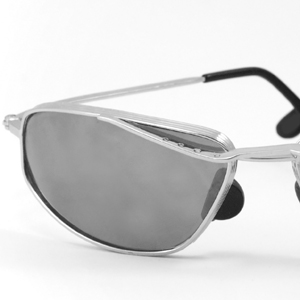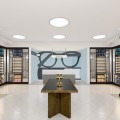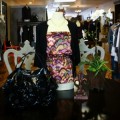UNTIL RECENTLY, glasses haven’t been all that welcome in the world of fashion. Though they’ve been around since long before there was a fashion industry, glasses are often remembered for their wackier contributions to fashion in the 20th century: the ‘50s cat’s-eye, the ‘60s round, Lennon-style wire rims, the 2000s horn-rimmed “emo” look and other fashion statements more suitable to a Halloween costume kit than a runway.
For years, there were only two ways to buy glasses: from the local branch of a national chain store, or straight from the optometrist’s office, which typically offers the same brands for even more money. In urban areas, optical boutiques can be found, but they often carry still more brand names, with hefty price tags for the frames alone. After all, glasses are essentially a medical device: If you have to show your insurance card to buy something, you know it’s not going to come cheap, and if you do go cheap, you usually get what you pay for in both quality and style.
However, the axis of optical world is tilting, as independent designers and entrepreneurs have tackled these problems by taking to the web to ply their wares. In only a few years, a growing indie-optical industry has harnessed the power of the Internet’s inherently free-form, free-thinking ideals to bring glasses wearers stylish options for a lot less cash—and to bring a new business model to the eyewear world.
It all started with Warby Parker. In 2009, the New York based company set up its site as a place where folks could find stylish glasses (and monocles!) for a flat fee of $95, prescription lenses and all. Warby Parker creates its own frames, and the edgy, urban-hipster designs, combined with the company’s revolutionary sales tactics, shot Warby Parker to fame in both the fashion and optical communities in little more than a year.
The key to Warby Parker’s success, besides the flat-fee pricing, is undoubtedly its “Home Try-On” service: Put in an order for up to five pairs of potential specs, and they will arrive on your doorstep. Keep them for a few days and try out each pair. When you’re done, report back with your final decision. They also have showrooms in select urban areas, including San Francisco.
From there, other designers followed. Spexclub and BonLook are two other popular indie houses that offer only a handful of haute-couture styles at a comparable price to Warby Parker’s. Most other online boutiques aren’t ready to trust customers with an honor system set of try-ons but instead use facial-recognition technology to help customers find flattering frames.
Both BonLook and Spexclub employ a “virtual mirror” that allows users to upload a personal photo and superimpose images of frames over their face. It’s not always easy to finagle a virtual pair of glasses onto a virtual face, but the virtual mirror eradicates the pressure of trying on pair after pair in an optometrist’s office or optical store with a commission-hungry associate shepherding you through the selection. All three brands, as with most online boutiques, offer free shipping and free returns.
Trends do go around from time to time in the eyewear world; lately, indie designers have been both starting and sustaining them. Wooden frames, an idea that emerged in the indie-glasses community around 2010, are on the menu at many an online boutique, and Cartier currently produces sunglasses with wooden temples.
It’s doubtful that glasses will ever be treated as equal when it comes to couture, but online optical boutiques have successfully carved out a cult following for themselves: Orders, media accolades and Facebook fanship have only increased exponentially for sites like Warby Parker in just around two years’ time. These brands, whether they meant to or not, created a brand-new entry point into an industry that hasn’t changed much for decades, proving that both fashion and the Internet are what you make of them.
History as Spectacles
www.antiquespectacles.com

 Luck of the Draw
Luck of the Draw  San Jose Rep: ‘Spring Awakening’
San Jose Rep: ‘Spring Awakening’ 


